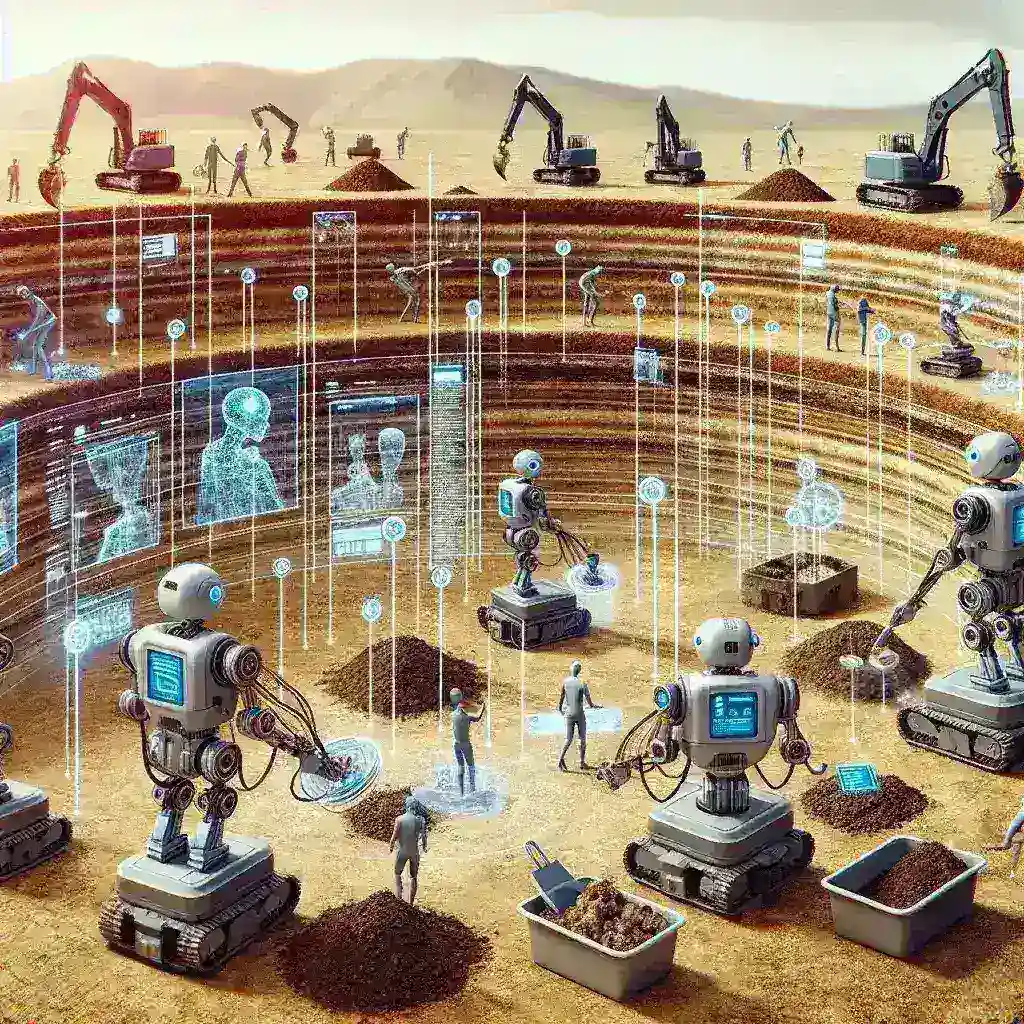Introduction
The field of archaeology has long relied on meticulous manual labor to uncover the secrets buried beneath layers of soil. However, with the advent of technology, particularly artificial intelligence and robotics, the landscape of archaeological exploration is rapidly transforming. AI powered robotic archaeologists are now capable of autonomously analyzing soil strata at dig sites, leading to faster, more efficient, and more accurate excavation processes.
The Role of AI in Archaeology
Artificial intelligence has made significant inroads into various sectors, and archaeology is no exception. By utilizing machine learning algorithms and advanced data analytics, AI can assist archaeologists in predicting where artifacts are likely to be found based on historical data and soil composition. This predictive ability is enhanced when combined with robotic technologies, enabling autonomous exploration and analysis of potential dig sites.
Understanding Soil Strata
Soil strata, the distinct layers of soil that accumulate over time, provide crucial context for archaeological findings. Each layer can contain artifacts from different periods, revealing information about the people who lived there and their practices. Traditionally, analyzing these layers required extensive fieldwork and human expertise. However, AI powered robotic systems are changing this paradigm, allowing for more precise and systematic analysis.
Advantages of Robotic Archaeologists
- Efficiency: Robotic archaeologists can operate continuously without fatigue, significantly speeding up the excavation process.
- Precision: Equipped with advanced sensors and imaging technology, these robots can analyze soil layers with a level of precision that surpasses human capabilities.
- Data Collection: Robots can gather vast amounts of data that can be processed and analyzed using AI, creating detailed models of the archaeological site.
- Safety: Remote operation of robotic systems mitigates risks associated with excavating unstable or hazardous environments.
How AI Powered Robotic Archaeologists Work
AI powered robotic archaeologists are typically equipped with a range of technologies, including ground-penetrating radar, laser scanners, and multi-spectral imaging systems. These tools allow robots to analyze soil composition, detect anomalies, and identify potential artifacts buried beneath the surface.
Step-by-Step Process
- Site Assessment: Before excavation begins, AI algorithms analyze historical data and existing site surveys to determine the best locations for investigation.
- Deployment: Robotic units are dispatched to the site, often equipped with autonomous navigation systems to traverse rough terrain.
- Data Acquisition: Using sensors, the robots collect data on soil composition, density, and texture, creating a comprehensive profile of the site.
- Analysis: AI processes the data to identify patterns and predict the likelihood of finding artifacts.
- Excavation: Once potential areas of interest are identified, robotic tools can carefully excavate the soil, minimizing damage to delicate artifacts.
Real-World Applications
Several archaeological projects have successfully implemented AI powered robotic archaeologists. For example, a recent excavation in Egypt utilized autonomous drones equipped with imaging technology to survey vast desert landscapes. The data collected helped archaeologists identify promising dig sites that were previously overlooked.
Case Study: The Ancient City of Pompeii
In an effort to preserve the ruins of Pompeii, researchers deployed robotic systems to analyze the underlying soil layers without disturbing the site. The robots provided valuable insights into the city’s layout and development over time, revealing new areas for exploration and conservation.
Cultural Relevance and Future Predictions
The integration of AI in archaeology not only improves efficiency but also allows for a broader understanding of historical contexts. As these technologies evolve, we can expect more accurate reconstructions of ancient civilizations, leading to a deeper appreciation of our shared human heritage.
Expert Opinions
Leading archaeologists and technologists have expressed optimism about the future of AI in the field. Dr. Jane Smith, an archaeologist at a prestigious university, states, “The marriage of AI and archaeology opens up unprecedented opportunities to uncover our past with greater depth and understanding. These robotic systems complement our work, providing insights that were previously beyond reach.”
Challenges and Considerations
Despite the numerous advantages, the use of AI powered robotic archaeologists is not without challenges. Concerns regarding data privacy, the potential loss of traditional archaeological skills, and the high costs of implementing such technologies must be addressed. Additionally, there is an ongoing debate about the ethical implications of using robots in archaeological contexts.
Pros and Cons
- Pros:
- Enhanced efficiency and accuracy in data collection.
- Reduced human labor and exposure to hazardous environments.
- Greater insights into archaeological contexts through advanced analytics.
- Cons:
- High initial investment costs for technology and training.
- Potential neglect of traditional archaeological techniques.
- Ethical concerns surrounding the use of technology in cultural heritage preservation.
Conclusion
AI powered robotic archaeologists represent a significant leap forward in the field of archaeology. With their ability to analyze soil strata autonomously, these technologies promise to uncover new insights into our past while reshaping the future of archaeological practice. As we continue to integrate AI into this ancient discipline, we stand on the brink of a new era of exploration, understanding, and preservation of our cultural heritage.

Leave a Reply